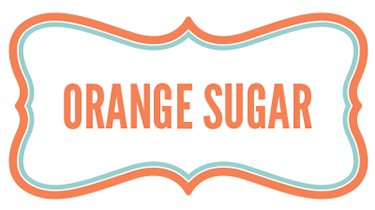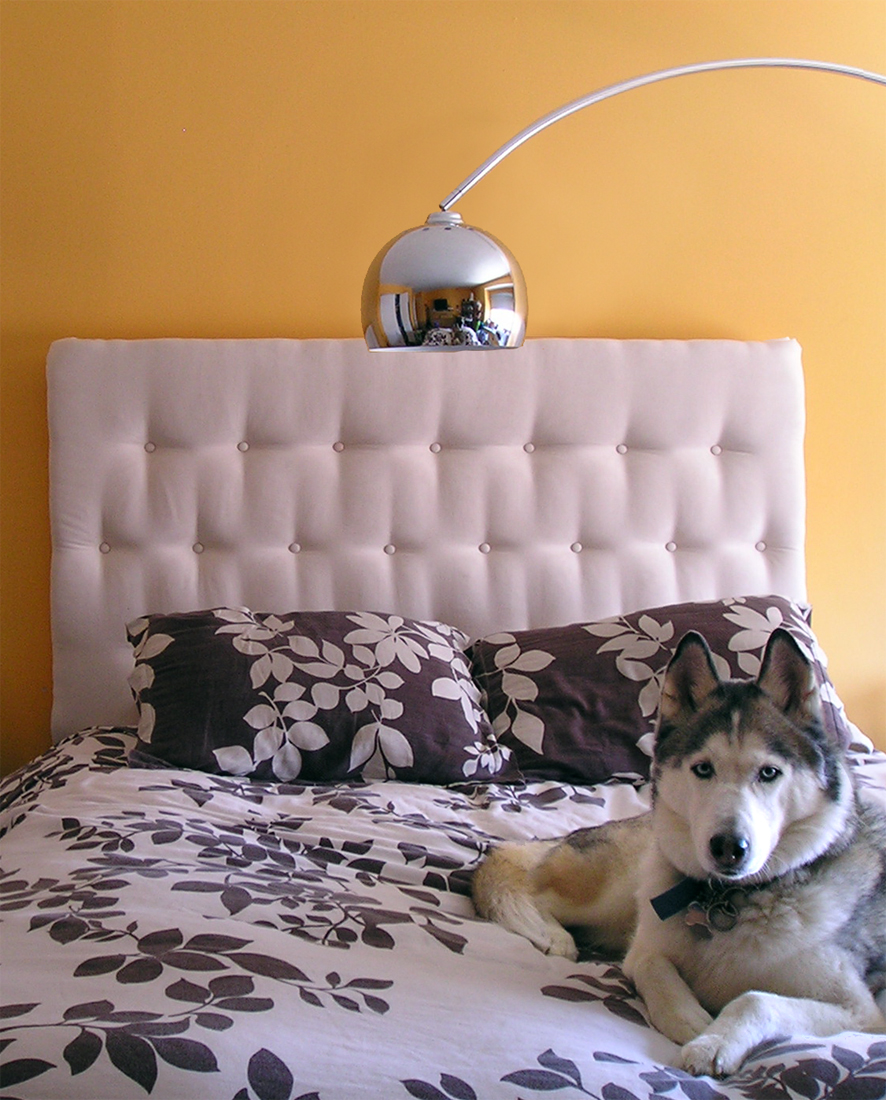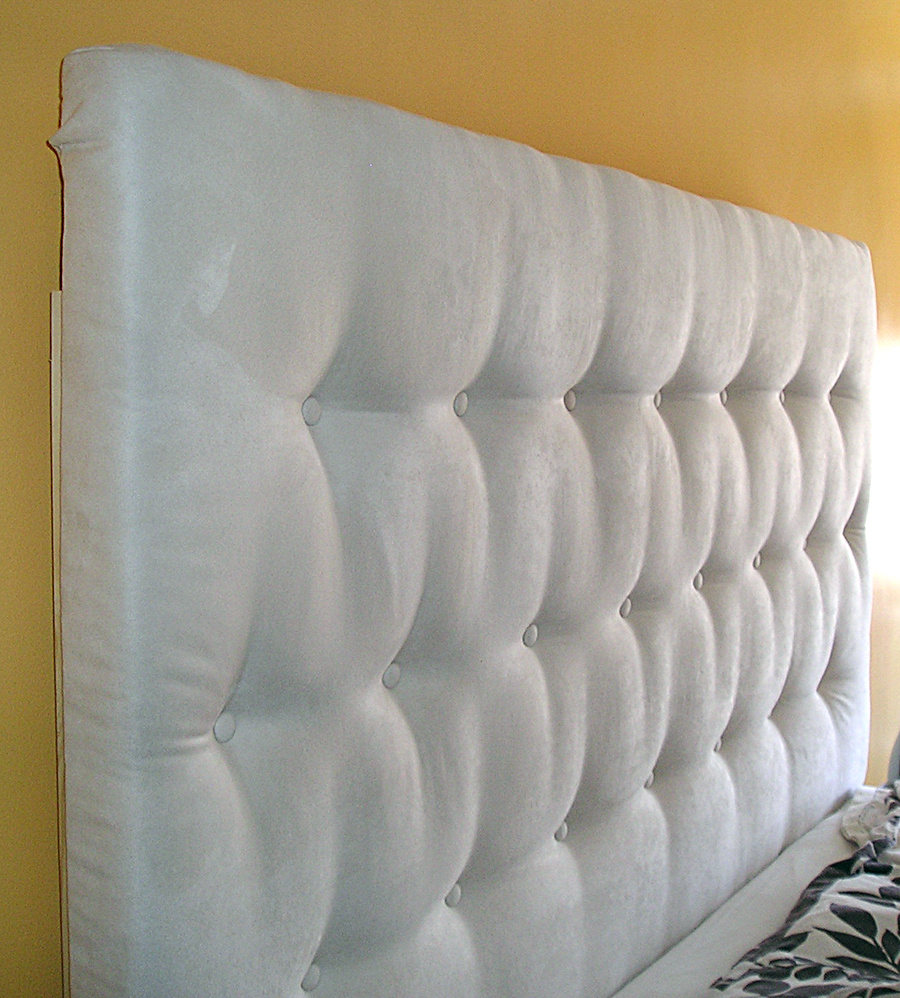Supplies:
1/2" Plywood
Foam (at least 2" thick)
Polyester Batting
Upholstery Fabric
Upholstery Thread
Upholstery Needle
Cover Button Tool and Buttons
Scissors
Spray Adhesive
See below for mounting options and supplies needed
Tools:
Staple Gun and 1/2" Staples
Tape measure
Drill
Hammer
Optional but helpful:
Rubber Mallet
Electric Knife
Step 1: Look for inspiration
Headboards can be made in a variety of shapes and sizes, depending on how ambitious you want to be. Since I had never made one before I stuck to your standard rectangle shape. My inspiration was this Nate Berkus headboard.
Step 2: Take Measurements
Width: Measure the width of your bed. The headboard should be a about 1" or 2" larger in width than your mattress.
Height: This is up to you. If you are planning on leaning against it while in bed make sure it is tall enough. Measure from the top of the mattress to the height you want the headboard to be.

Step 3: Buy Your Supplies:
You can buy plywood in large sheets. Have the hardware store cut it to size. (Most stores will do this for free.) The sheet probably won't lay exactly flat, but it isn't a big deal.
You may know of a better source for foam but I bought mine at JoAnn fabrics for 50% off. I had to buy two pieces because their foam only comes in one width and this accounted for about half the money spent on the project.
When buying your batting and fabric, make sure you have enough to wrap around the front and secure to the back. (I wouldn't recommend a patterned fabric for your first try.) Two layers of batting over your foam is recommended.
Step 4: Put It All Together:
1. Find a clean, well ventilated work area.
2. Determine how many buttons you will use and where you want them to go. (Just a heads up the tufting was by far the most time consuming part.) Mark the board and drill small holes. (Just small enough for the upholstery needle to pass through, this will help keep the buttons lined up.)
3. Lay the plywood down and spray one side with adhesive and adhere the foam. Cut off any excess foam so that it is exactly flush with the plywood. There should be no overlap. (This is where that electric knife comes in handy.)
4. Push your upholstery needle through the holes you just drilled the foam. Make shallow cuts into the foam where your upholstery needle comes through.
5. Spray the foam with adhesive and hold one side of the batting while your friend holds the other side and pull taut. Place on top of foam. Make sure there is no puckering because it will show through the fabric. Repeat for second layer of batting.
6. Flip the plywood, foam and batting over and lay it flat on the ground. Wrap the batting around to the backside and staple in place.
7. Lay fabric on the floor wrong side facing up. Place plywood, batting side down on top of fabric. Wrap fabric around to the back of the headboard, secure the fabric loosely with a few staples.
8. Use the button covering kit to cover your buttons. (See this tutorial on youtube for help.) This part is a pain. The smaller the button, the more difficult it is to cover them. (A rubber mallet will be helpful. I ruined my button maker with a hammer.)

9. Double thread your upholstery needle with upholstery thread and poke through one of your pre-drilled holes from the back to the front. Don't pull all the way through! Make sure to leave some thread hanging out of the back. Slide the button onto the thread and poke the needle back through the same hole. Push the button on the front of your headboard into the foam while your friend tightly secures the thread on the back with a bunch of staples. You will need a hammer to bang in the staples, so that the thread will stay secure. (There is probably a better way to secure the thread but this is how I did it.)
10. Continue along and tuft each of your holes.
11. When all the tufting is finished, secure the fabric to the back of the plywood with more staples.
12. Step back and admire your work.
Mounting Options:
There are three ways that I know of to mount your headboard; legs, a french cleat or flush mounts.
Legs are the most apartment friendly method because it doesn't involve drilling holes into the walls. Just make sure that the headboard sits a little above your mattress or else it can interfere when you are trying to make the bed. For this option you will need two 1x4's cut to size. The legs should be about 2" above the floor and within 5" of the top of the headboard. Screw the 1x4's to the back of the headboard and then bolt them onto your bed frame.
A French cleat is a little more involved but this is my favorite method. To use this method take a board and rip it at a 45 degree angle. Then you mount one piece to the back of the headboard and the other to the wall. The headboard sits on the upward facing angle making it very sturdy. You will also need to attach another piece of wood to the bottom of the headboard to keep it level. Hopefully this video and image can help clarify things.
The flush mount method can be found at bejane.com.
Tips:
If you have a Joann Fabrics in the area, this is the place to buy most of your supplies. I was able to get my fabric, foam, and batting for 50% off. Most of the other supplies can be bought with one of their 40% off coupons.
DancingMagpieSupply on Etsy is a great resource for buttons.
For this project I pieced together instructions from a variety of sources online, mainly bejane and joann fabrics.
*****
I’m sharing this post at: Remodelaholic * Finding Fabulous * Miss Mustard Seed
This project was featured at:

&
Pin It



I found this image through Apartment Therapy. do you know what shade of paint is used?
ReplyDeleteThis comment has been removed by the author.
ReplyDeleteHi Moxie. I know the paint was purchased at Lowes and I believe it was American Traditions which I don't think they sell anymore. However Vintage Orange by Behr is very similar.
ReplyDeleteoh, i love this!!! Great job!! Beautiful headboard...I might have to try this one day!!
ReplyDeleteI LOVE your headboard!!! I just recently refinished one for our bed--but I REALLY love the tufted look of this one!! Maybe I'll have to do it for one of the kids beds someday!!
ReplyDeleteGreat job on your headboard! It looks great! We recently made a headboard as well but it had fewer buttons.
ReplyDeleteVery cool! I love the way your headboard turned out!
ReplyDeleteI love your headboard! I will be featuring this later today, check it out and grab a button!
ReplyDeletehttp://soverycreative.blogspot.com/
I made a headboard and used cheap, plastic buttons on the back and just tied off the upholstery thread back there. That made it easy for me to get a good, tight button on front and also allows me an easy fix if/when one of the front buttons is messed up by my very active sons. I love your headboard!!!
ReplyDeleteHelpful tutorial with fantastic results. Congrats and thanks for sharing your know how! Pam @ Sallygoodin
ReplyDeleteThis is kind of a random question, but where did you get the bedspread in the picture? I love it!
ReplyDeleteThe bedding was purchased at Linens n Things before they went out of business. It was called Sanctuary by Pure Green.
ReplyDelete